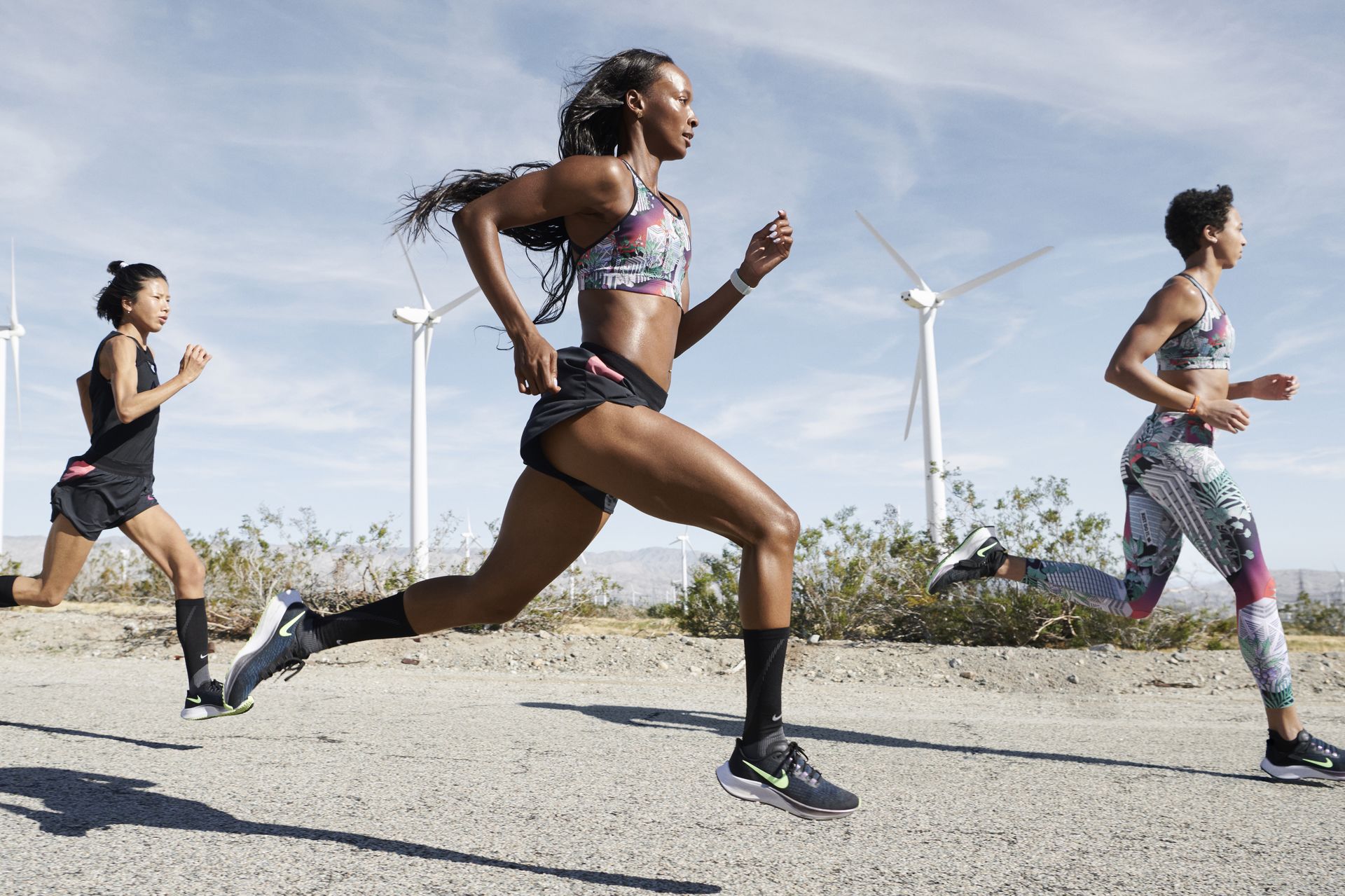
German long-distance runner, Uta Pippig famously won the Boston marathon in 1996 with menstrual blood dripping down her leg as she elatedly crossed the finish line. British long-distance runner, Paula Radcliffe, also set the marathon world record in Chicago in 2002, despite struggling with period cramps in the last third of the race.
Whilst these exceptional examples demonstrate that your menstrual cycle need not interfere with running performance, there are ways to help make your cycle more manageable and your training more enjoyable. After all, we aren’t all world-class athletes and everyone’s cycle is different. Many people skip out on their workouts entirely during their menstrual cycle and considering that around this time you might be experiencing painful cramps, insomnia, nausea, breast tenderness and mood swings, it’s no wonder that many choose to temporarily put the running shoes to one side.
If, however, you’re keen to keep your training plan up and running, then it’s wise to begin by getting to know your own cycle. Everyone’s cycle varies, but the average menstrual cycle lasts 28 to 32 days and is made up of two main phases, the follicular phase and the luteal phase, each lasting around 12 to 14 days.
When you’re at the beginning of your bleed, estrogen, and progesterone levels are low which might leave you feeling quite lethargic. The prospect of exercising during this time can be daunting and if you’re struggling with painful period cramps and feeling unmotivated, then rather than stopping your running training entirely, opt for a gentler form of exercise. Walking, yoga, and swimming are excellent activities that keep you moving and can also help alleviate the discomfort of menstrual cramps. Exercise will also provide you with those welcome endorphins which can help counteract period blues.
After the bleed phase, around days 5-14 of your cycle, as estrogen levels rise, you are likely to start feeling sharper and more energetic. Take advantage of this spike in energy and fit in that high-intensity training. Full body workouts, intervals and sprint sessions are all ideal for this time of the month when you are feeling stronger and more motivated.
Around days 14-22, following this burst of energy, estrogen and progesterone levels are both high which is the perfect time to increase endurance activities. Up the mileage and try fitting in some longer-distance runs.
A week before your next cycle begins you may experience some unwelcome PMS (pre-menstrual syndrome) symptoms due to the quick decline in estrogen, testosterone and progesterone that occurs in the body. You may feel sluggish and unmotivated so go easy on yourself during this phase and focus on recovering from those longer training sessions. Listen to your body and don’t push yourself too hard. Yoga can be a helpful way to relax and de-stress during this time.
Hormonal fluctuations can leave you feeling a little off-balance. By getting to grips with your own cycle you will start to see familiar patterns and know what to expect. Aside from marking the days down on your calendar, there are wonderful new ways of tracking your cycle.
Apps like FitrWoman and Moody Month, let you log the days of your period and any symptoms you experience throughout your cycle. FitrWoman is specifically tailored to give you personalized training suggestions that take into account the hormonal fluctuations of your cycle. You can also sync your FitrWoman account with your Strava account which allows you to see how your training develops in the different phases of your cycle. Moody Month not only lets you track symptoms and feelings daily but also gives you a useful forecast of information about what part of your cycle you’re in and what you can expect to be feeling. The app provides daily yoga sessions that are tailored to what’s happening in your body as well as nutrition and food tips.
Remember that everyone experiences their cycle differently and what’s most important is finding out what works for you. Once you’ve learned the familiar motions of your cycle then you are ready to get out there and maximize your running potential. Your period doesn’t have to throw your running training off course.





